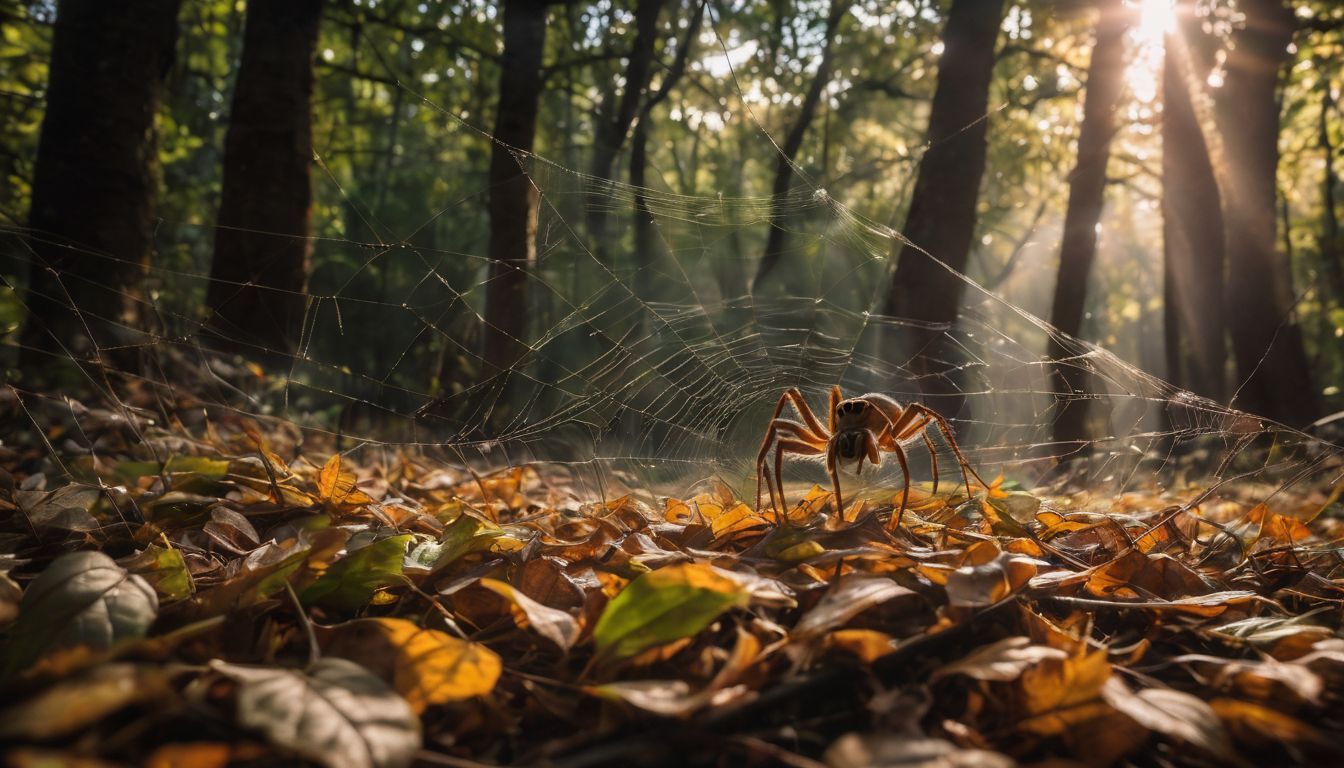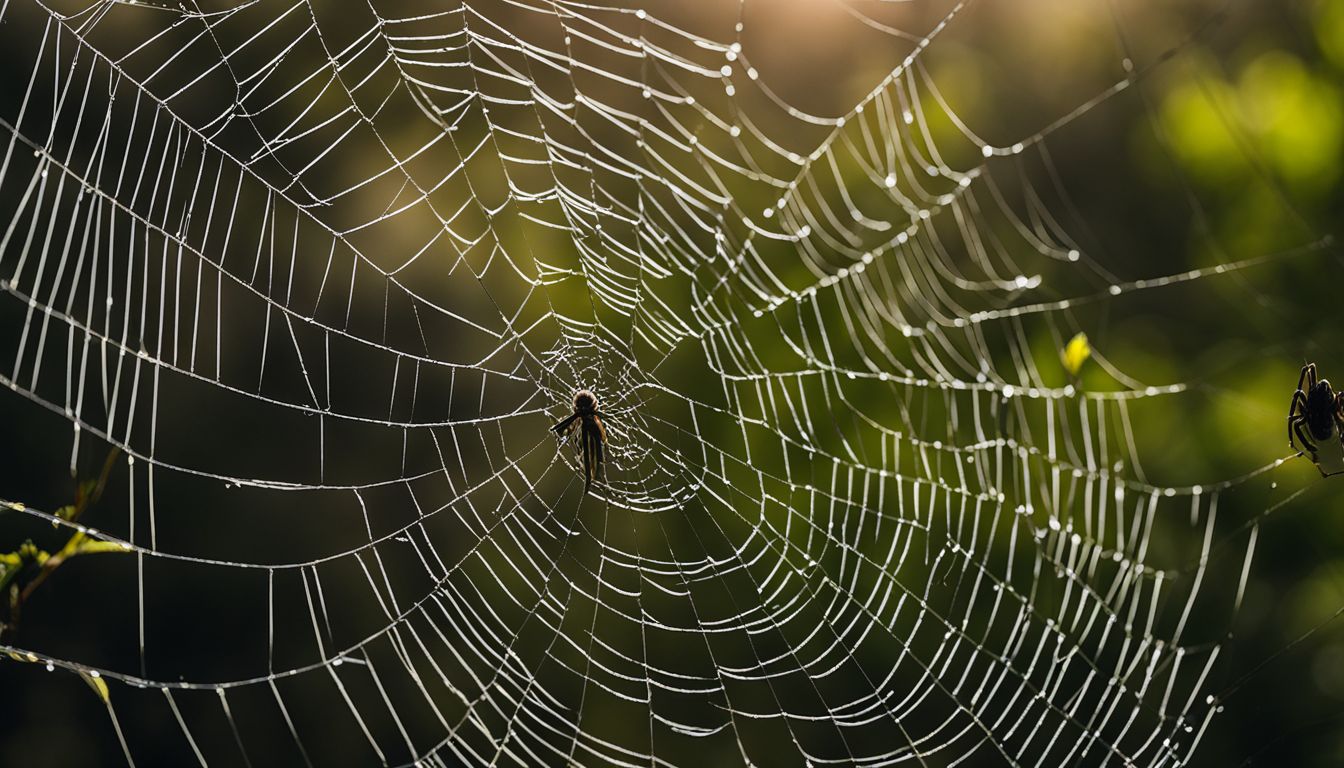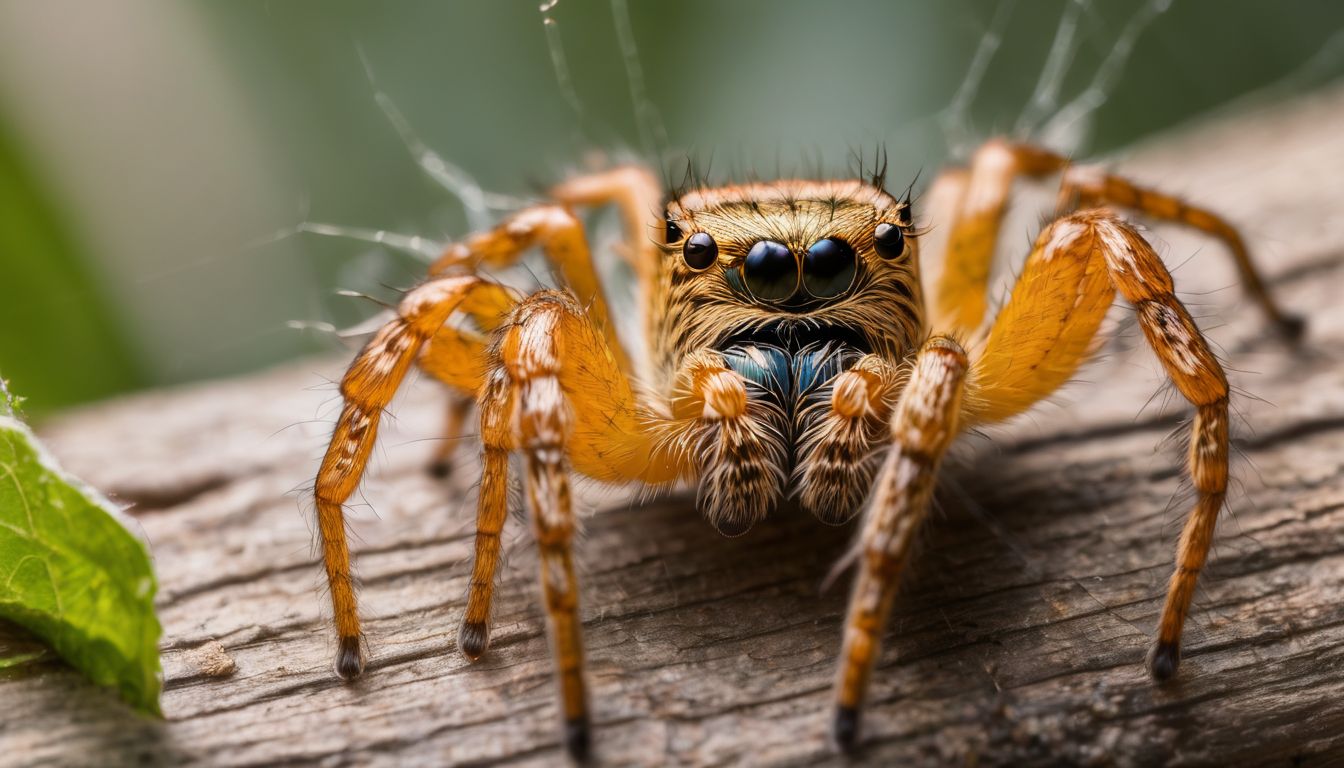Have you ever wondered what to call a gathering of spiders? It might surprise you to learn that these eight-legged creatures have their own collective nouns—’Cluster‘ or ‘Clutter.’ In this blog, we’ll unravel the intriguing social world of spiders and reveal why these terms accurately describe their group behavior.
Dive in with us as we explore the fascinating collective life of arachnids!
Key Takeaways
- Spiders can form groups known as a “cluster” or “clutter,” showcasing their social behavior despite being primarily solitary creatures.
- Factors such as cooperative hunting, communal living, maternal care, and environmental conditions influence the formation of spider clusters.
- Understanding the correct usage of terms like “cluster is” versus “cluster are” is essential when describing spider groups and their actions.
- Contrary to popular belief, most spiders are not harmful to humans and play a crucial role in controlling insect populations.
The Curious Case of Spider Groupings

Spiders are typically thought of as solitary creatures, but they do have the capability to form groups. These gatherings can be referred to as a “cluster” or even a “clutter” of spiders, shedding light on their social behavior.
Understanding the Term “Cluster”
A “cluster” is a word used to describe a group of spiders living close together. Just like people form towns, some spiders create clusters where they share space. These spider clusters are interesting because they’re not found just anywhere.
In fact, research shows that certain spider clusters are special to places like south Texas while others can pop up almost everywhere.
Clusters show us more than where spiders hang out; they also tell us about the spiders’ relationships. Scientists look at how close different kinds of spiders are in a cluster to figure out their family ties and genetic distances.
This helps them understand which spider species are more like cousins and which ones aren’t so closely related.
Alternate Nomenclature: “Clutter” of Spiders
Some people call a group of spiders a “clutter.” This word makes us think of a messy pile where it’s hard to find anything. With spiders, this could mean many of them all close together.
It’s not very often you see lots of spiders in one place unless they are baby spiderlings just hatched from the egg sac. Spider silk is another reason we might say “clutter.” Webs can look like clutter in corners or on things we don’t use much.
It’s interesting to think about this name because it helps us picture how spiders live and what their webs look like.
Social Behavior in Spiders

Spiders exhibit social behavior in various forms, such as cooperative hunting, communal living, and even maternal care. This behavior is often influenced by factors like prey availability, environmental conditions, and genetic relatedness among the spiders.
When and Why Spiders Form Groups
Spiders are known for living alone, but sometimes they come together. They may group up for different reasons, such as working on a big web or being safer from other animals.
- Some spiders form groups to make big webs that can catch more food.
- Being in a cluster helps some spiders protect each other from predators like birds and bigger insects.
- In colder places, spiders sometimes stay close to keep warm.
- Mother spiders often stay with their babies to keep them safe until they grow up.
- Certain kinds of social spiders live together because they share duties like catching prey and caring for the young ones.
- Spiders might gather when there’s lots of food in one place, so it makes hunting easier for them.
- Staying in a group can also help spiders learn from each other, like finding the best ways to build webs or hunt.
- Social interactions among these eight – legged creatures can make them bolder when facing dangers together.
Misconceptions and Facts about Spiders
After understanding why and when spiders form groups, it’s important to be aware of some misconceptions and facts about these fascinating creatures. Here are some key points to keep in mind:
- Spiders are not always solitary creatures; some species do exhibit social behavior and form communities or clusters.
- Not all spiders are venomous – only a small percentage of spider species have venom strong enough to harm humans.
- Spiders are not insects; they belong to a different category called arachnids, which also includes scorpions, ticks, and mites.
- Spiders play a vital role in ecosystems by controlling insect populations, such as mosquitoes, flies, and agricultural pests.
The Language of Spider Groups
Understanding the collective noun for spiders can be a bit confusing, but it’s important to clarify the correct usage of terms like “cluster is” vs. “cluster are” when discussing groups of these fascinating arachnids.
Let’s delve deeper into the language of spider groups and clear up any misconceptions.
Clarifying “Cluster Is” vs. “Cluster Are”
When talking about a group of spiders, we use “cluster is” when referring to the whole group as a single unit. For example, “The cluster of spiders is moving together.” On the other hand, we use “cluster are” when referring to individual members within the group.
For instance, “The cluster of spiders are all hunting for food.” Understanding this difference can help in correctly describing spider groups and their actions.
Spiders often form clusters or groups depending on factors like food availability and mating opportunities. This behavior helps them survive and reproduce more effectively. By understanding how to use “cluster is” versus “cluster are,” novices can better communicate about these intriguing arachnid social structures.
Spiders: Solitary Creatures with Occasional Gatherings
Spiders are typically solitary creatures, but there are instances where they gather in groups for mating, protection, or hunting. To learn more about the social behavior of spiders and their collective noun, keep reading!
Exploring the Rarity of Spider Groups
Spiders typically lead solitary lives, but there are some instances where they may come together in groups. This behavior is uncommon and seen in specific species under particular conditions.
Spiders might congregate to share a food source or during mating season. However, this clustering behavior is not prevalent across all spider species, making it a rare occurrence in the arachnid world.
As we delve into the language of spider groups, let’s explore the social behavior patterns that drive these occasional gatherings.
Additional Spider Facts and Myths
- Spiders can be found on every continent except Antarctica and are estimated to consume around 400-800 million tons of prey every year.
- Despite popular belief, most spiders are not harmful to humans and play a crucial role in controlling insect populations.
- The silk produced by spiders is incredibly strong, with some varieties being as strong as steel of the same diameter.
- Some female spiders exhibit maternal care, with certain species carrying their egg sacs or young spiderlings on their backs until they are ready to fend for themselves.
- Contrary to common myths, very few species of spiders are cannibalistic, and such behavior usually occurs only in specific circumstances or at certain life stages.
- While tarantulas may appear menacing due to their size, most species are docile and pose little threat to humans unless provoked.
Conclusion: Understanding the Collective Noun for Spiders
In conclusion, understanding the collective noun for spiders is intriguing. Spiders can form clusters or shrewdnesses, contrary to the common belief that they are entirely solitary.
The terms “clutter” and “cluster” are used to describe groups of spiders, reflecting their behavior and characteristics. These collective nouns highlight the close gatherings of these arachnids in their natural habitat.
Research continues to reveal more about the social behaviors of spiders and their fascinating group dynamics.
If you’re curious about other ways to deal with unwanted eight-legged guests, discover whether hairspray kills spiders on our site.
FAQs
1. What do you call a group of spiders?
A group of spiders is often called a cluster or a clutter.
2. Are there different kinds of groups for different spiders?
Yes, different types may form unique groups, like black widows are often found alone while orb-weaver spiders might be seen in groups on their large webs.
3. Can you find groups of black widow spiders together?
It’s rare because black widow spiders usually live alone and can even harm each other if they’re too close.
4. Do all spiders make webs together in a group?
No, not all spider groups make webs; some like the jumping spider hunt alone without using spider silks to catch prey.
5. Why don’t we see big groups of spiders like we do with some bugs?
Spiders are often not social (subsocial), meaning most don’t live in large families or work together like bees or ants might, although there are exceptions.




